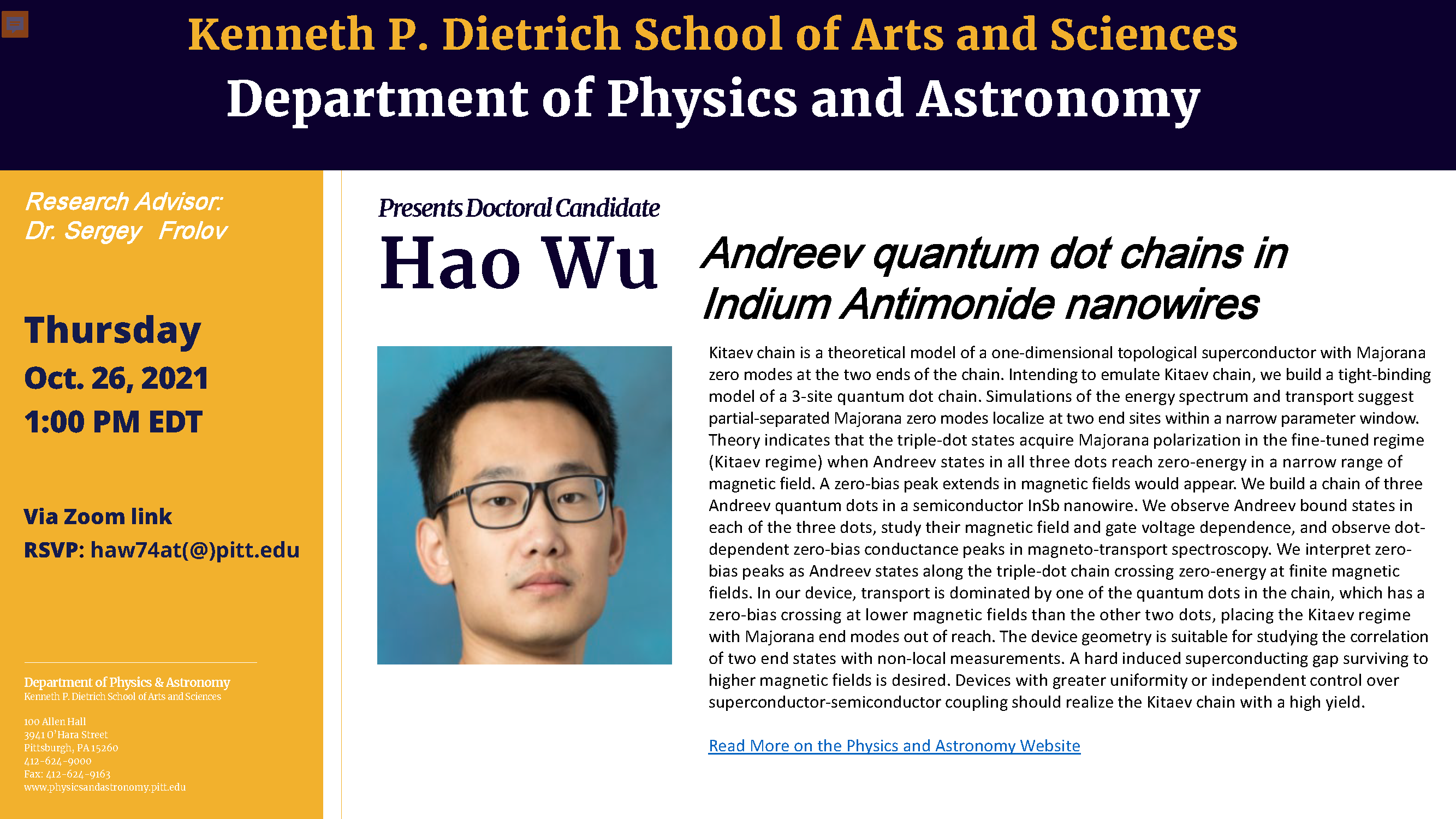Doctoral Defense: Hao Wu
October 26, 2021 - 1:00pm
Andreev quantum dot chains in Indium Antimonide nanowires
Kitaev chain is a theoretical model of a one-dimensional topological superconductor with Majorana zero modes at the two ends of the chain. Intending to emulate Kitaev chain, we build a tight-binding model of a 3-site quantum dot chain. Simulations of the energy spectrum and transport suggest partial-separated Majorana zero modes localize at two end sites within a narrow parameter window. Theory indicates that the triple-dot states acquire Majorana polarization in the fine-tuned regime (Kitaev regime) when Andreev states in all three dots reach zero-energy in a narrow range of magnetic field. A zero-bias peak extends in magnetic fields would appear. We build a chain of three Andreev quantum dots in a semiconductor InSb nanowire. We observe Andreev bound states in each of the three dots, study their magnetic field and gate voltage dependence, and observe dot-dependent zero-bias conductance peaks in magneto-transport spectroscopy. We interpret zero-bias peaks as Andreev states along the triple-dot chain crossing zero-energy at finite magnetic fields. In our device, transport is dominated by one of the quantum dots in the chain, which has a zero-bias crossing at lower magnetic fields than the other two dots, placing the Kitaev regime with Majorana end modes out of reach. The device geometry is suitable for studying the correlation of two end states with non-local measurements. A hard induced superconducting gap surviving to higher magnetic fields is desired. Devices with greater uniformity or independent control over superconductor-semiconductor coupling should realize the Kitaev chain with a high yield.
We characterize hybrid InSb nanowire/Sn shell devices fabricated with in-situ shadow technique and observe a hard induced superconducting gap that persists up to 4~T in magnetic field. The two-electron charging effect, a hallmark of charge parity stability, is observed in a small island of Sn/InSb. We also study a double quantum dot in a hybrid InAs nanowire/Al shell device and demonstrate Andreev blockade.
Due to its overall tunability and design flexibility, the quantum dot system remains promising for quantum simulation of interesting models and particularly for modular topological quantum devices.
Location and Address
Event is remote-only via Zoom.
RSVP through the doctoral candidate at haw74atpitt.edu.
